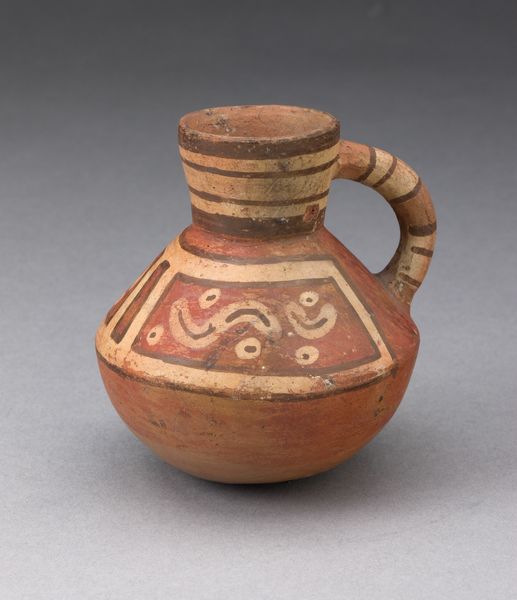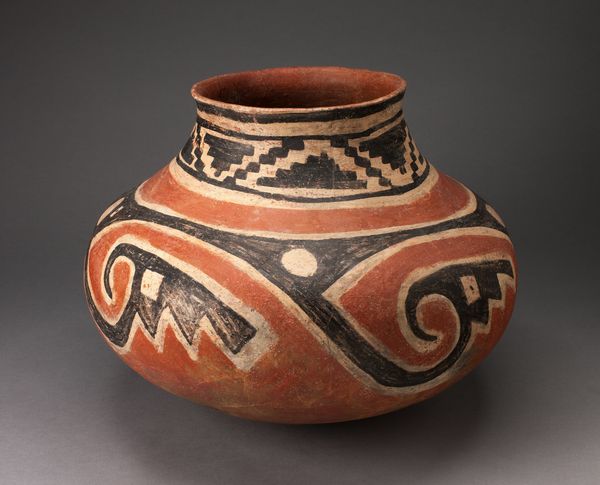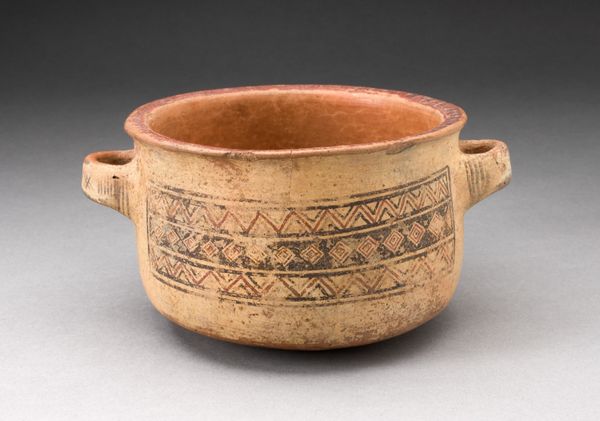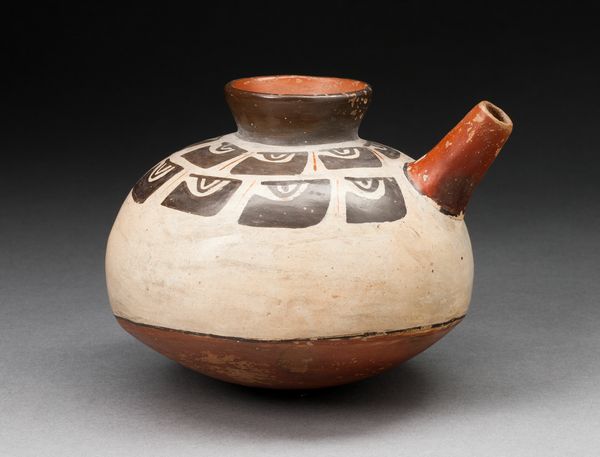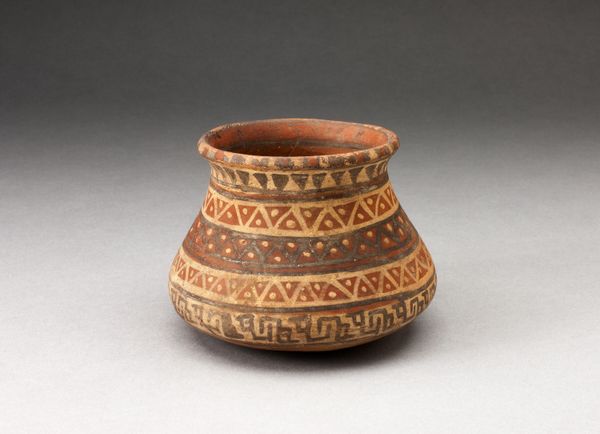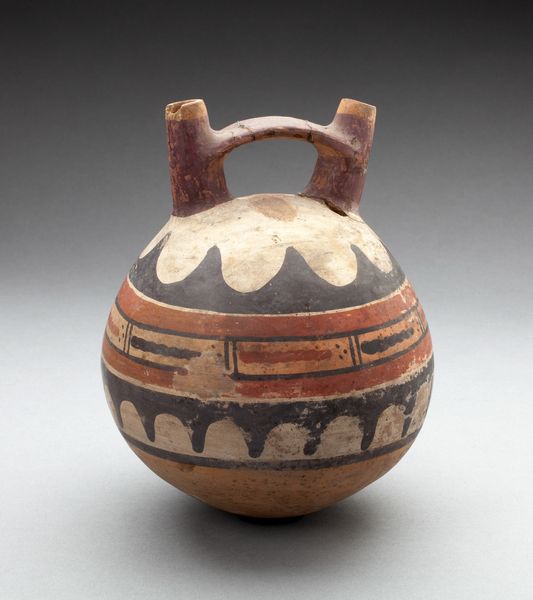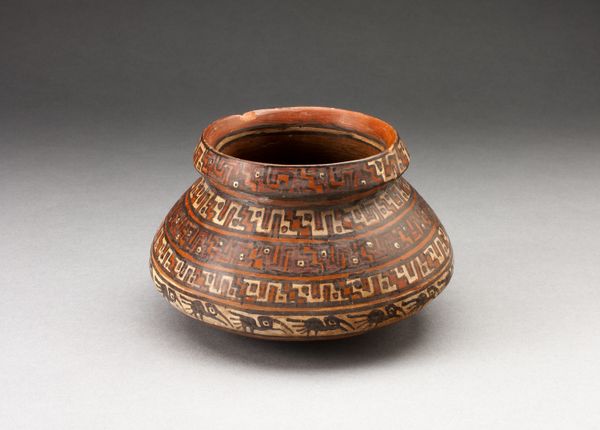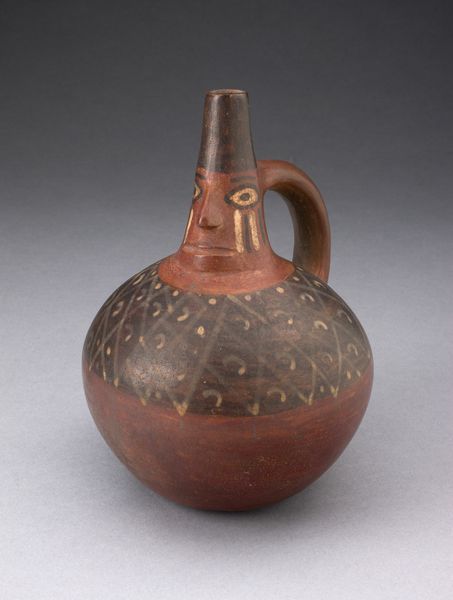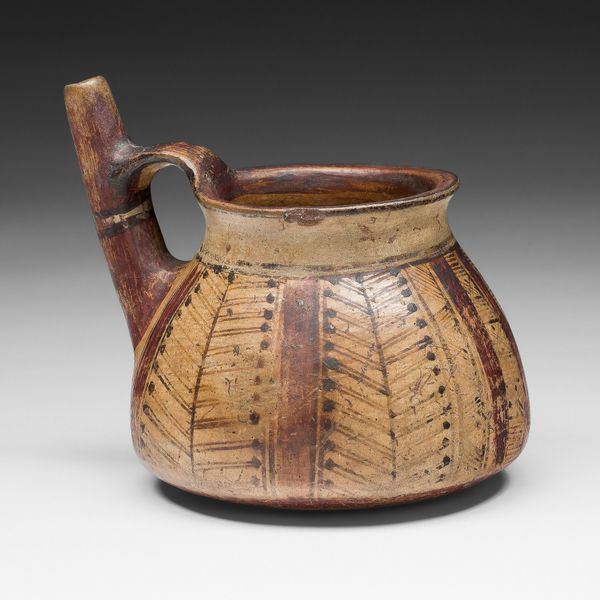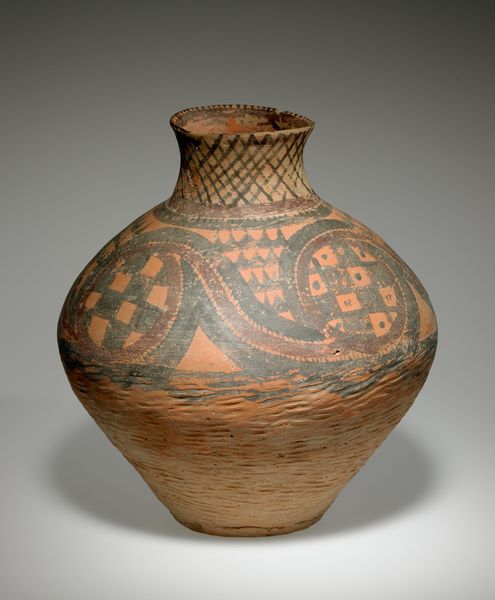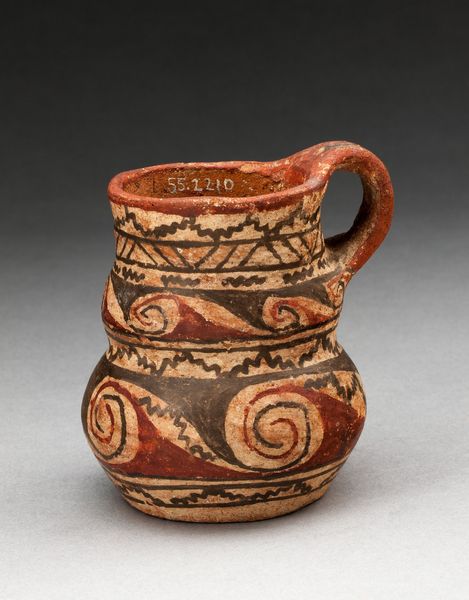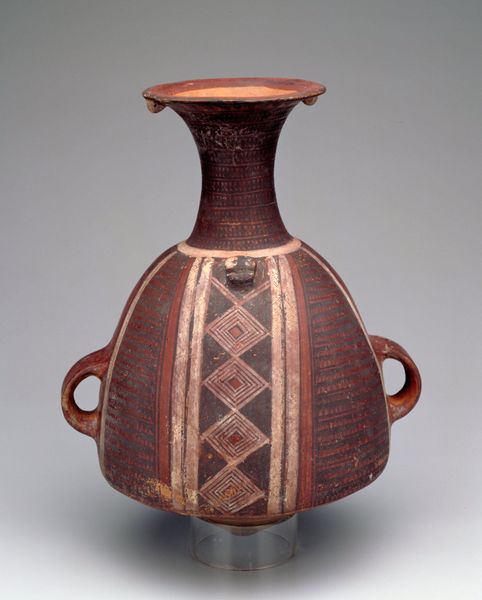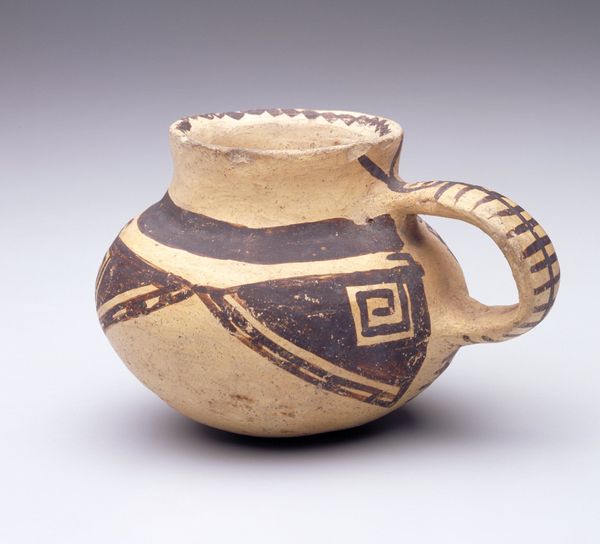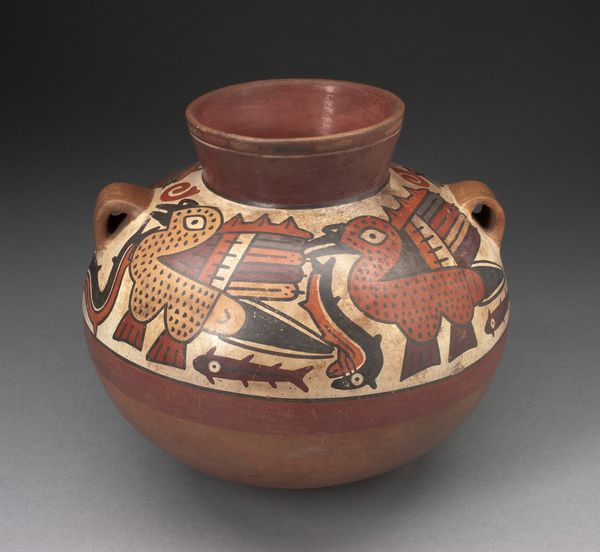
Miniature Single-Handled Jar with Textile-like Pattern Possibly 1450 - 1532
0:00
0:00
ceramic, earthenware
#
ceramic
#
earthenware
#
geometric
#
ceramic
#
indigenous-americas
Dimensions: 11.4 × 12.7 xm (4 1/2 × 5 in.)
Copyright: Public Domain
Editor: Here we have a fascinating piece: a Miniature Single-Handled Jar with Textile-like Pattern, made during the Inca period, possibly between 1450 and 1532. It’s currently at the Art Institute of Chicago. The earthenware and intricate geometric designs give it a tactile, almost woven feel. How do you interpret its materiality? Curator: This "textile-like pattern," as you mentioned, is key. Consider the materials readily available to the Inca: cotton, alpaca wool. We know textile production was a highly valued skill, a form of tribute, even. The geometric patterns themselves, painstakingly rendered in the weaving process, carried significant meaning. Now, shift that labour onto clay. Doesn’t the very act of mimicking woven structures in ceramic challenge our notion of 'high art' versus 'craft'? Editor: It does. I hadn't thought about the displacement of labor. Was it common for ceramics to mimic textiles in that way? Curator: Absolutely. The Inca state controlled resources, and potentially even the means of production. Was this ceramic meant to *replace* a textile offering, or augment it? And what does that say about the value placed on different materials and forms of labour within Inca society? We also must consider the socio-economic context. Was the ceramic meant for daily use or some ritualistic exchange, perhaps involving the chicha-making or storage from maize? Editor: I see...So it's not just about the pretty patterns, but about power dynamics and resource management, translated through the making. I never considered it on such material level before! Curator: Precisely! Considering what’s in front of our eyes and the hands that created it. These humble material traces have to open questions on a larger cultural production. Editor: This is really giving me a fresh appreciation. It makes me realize the object as a social statement! Thank you!
Comments
No comments
Be the first to comment and join the conversation on the ultimate creative platform.
